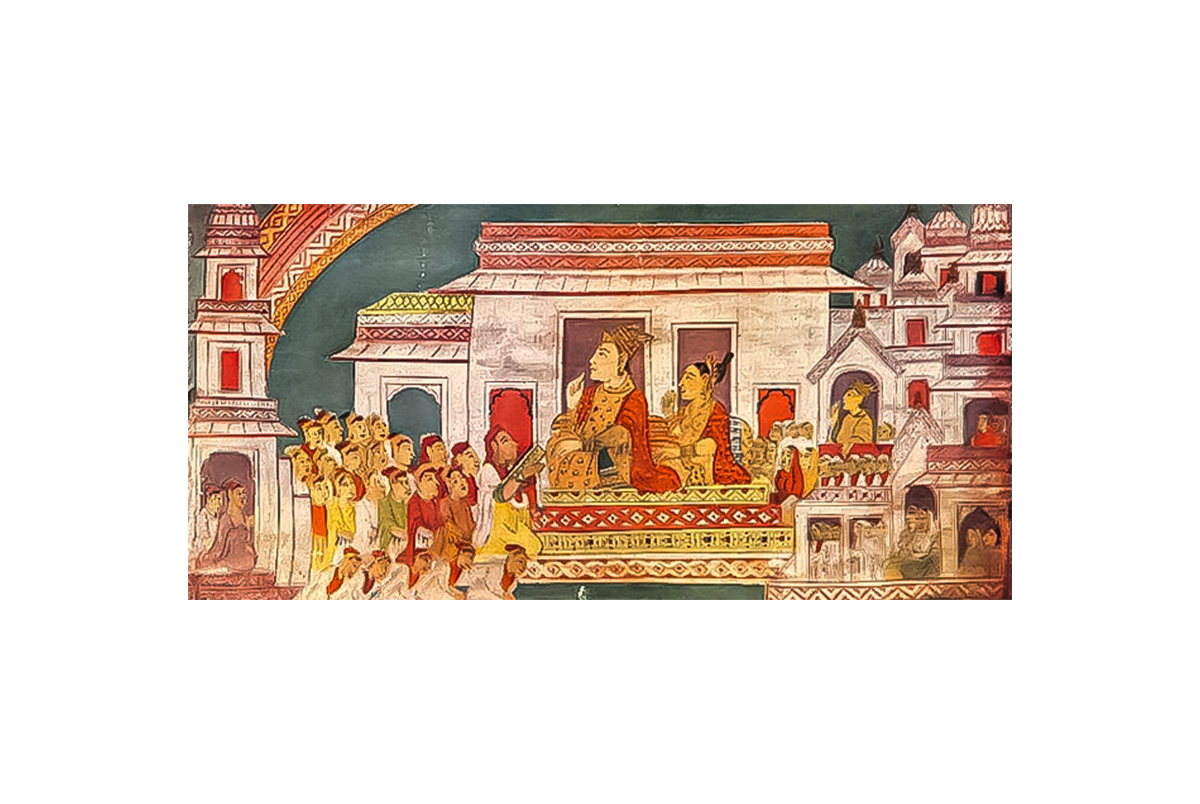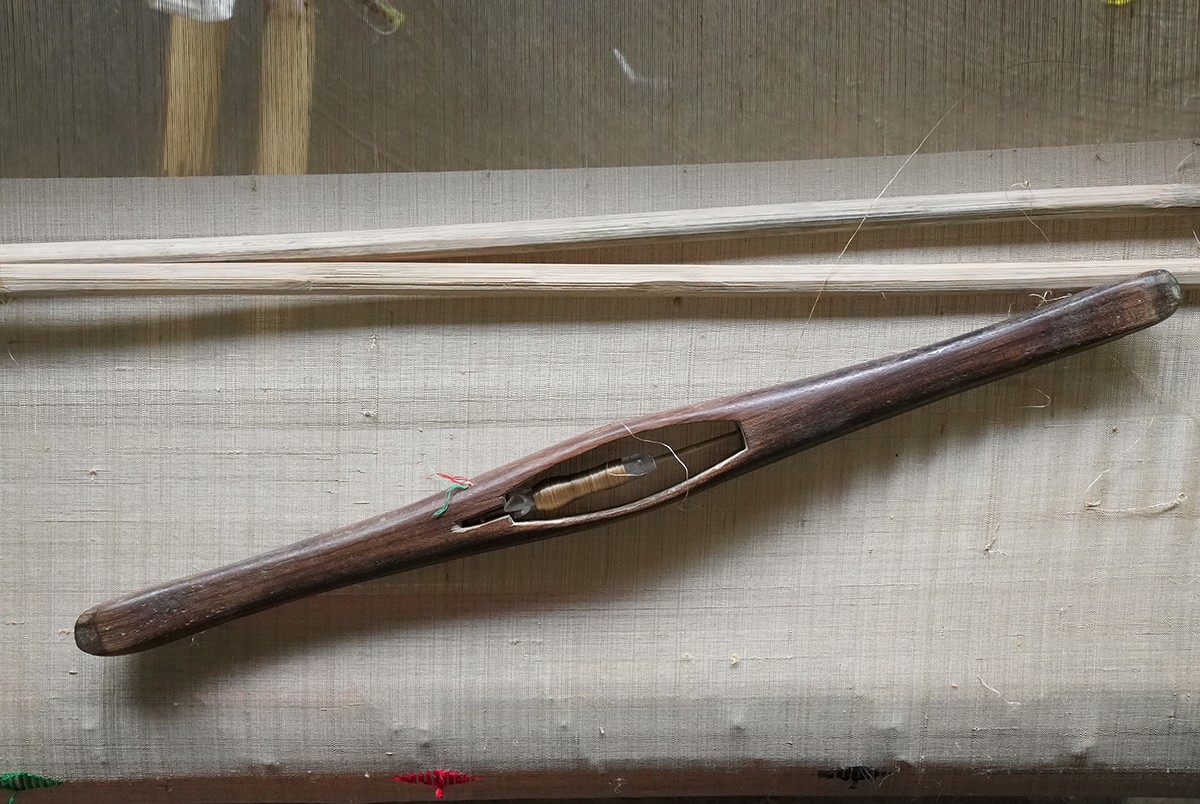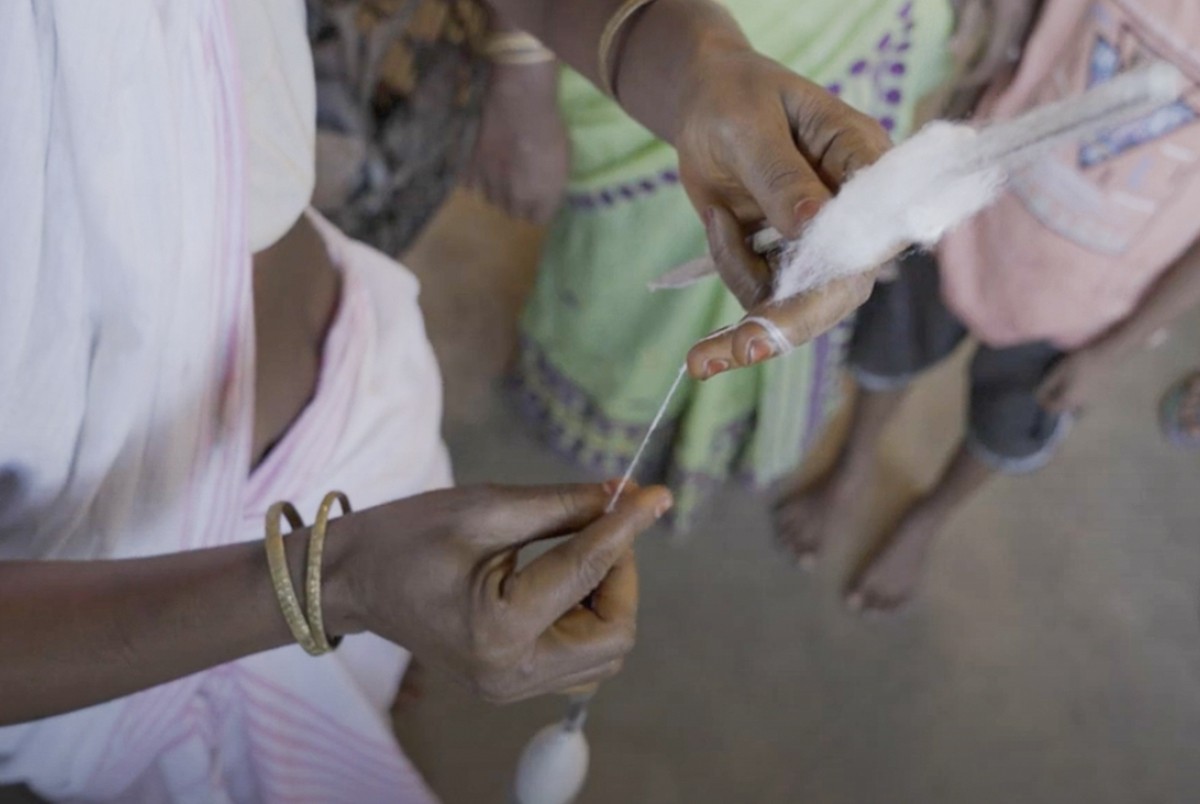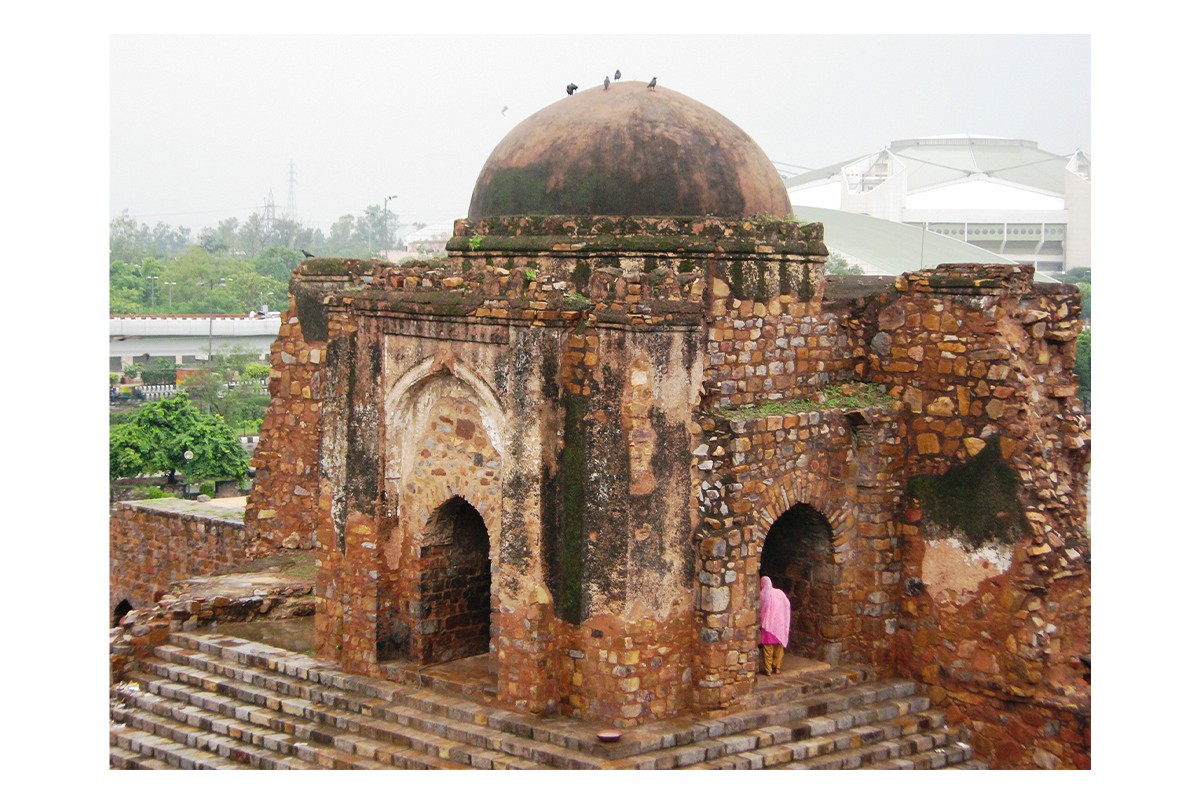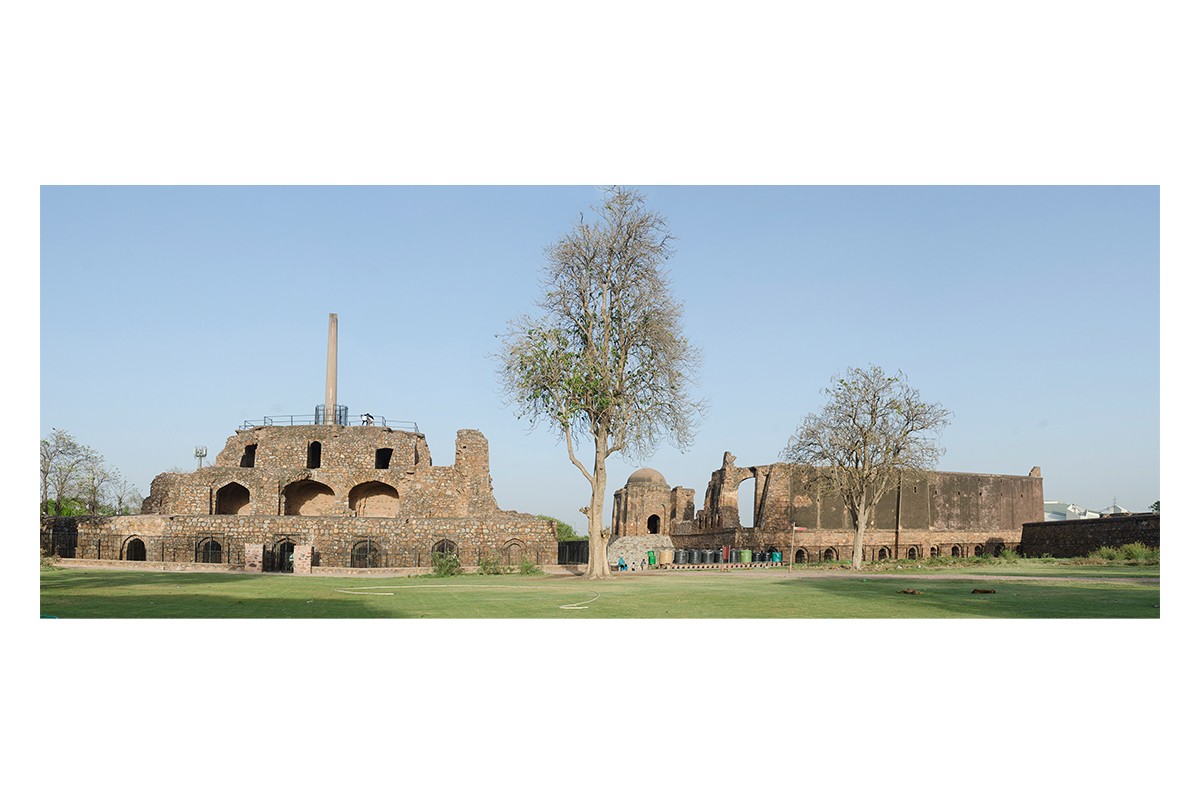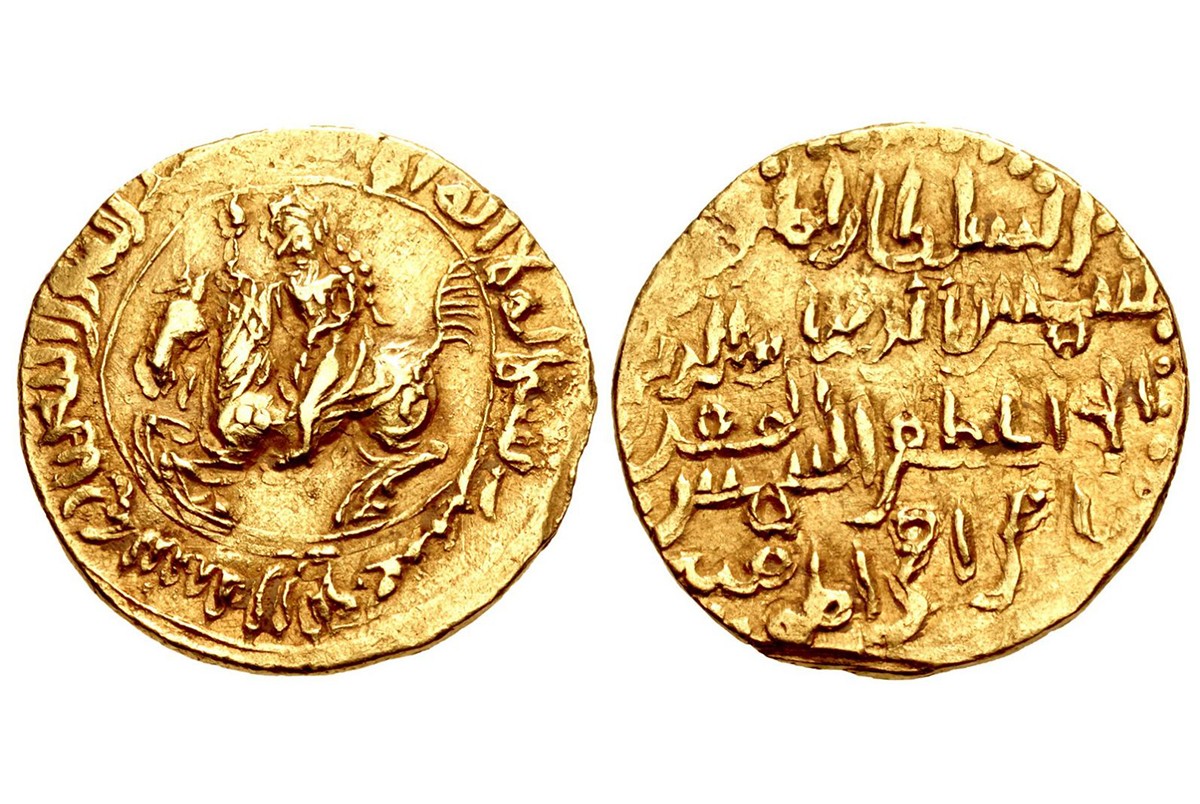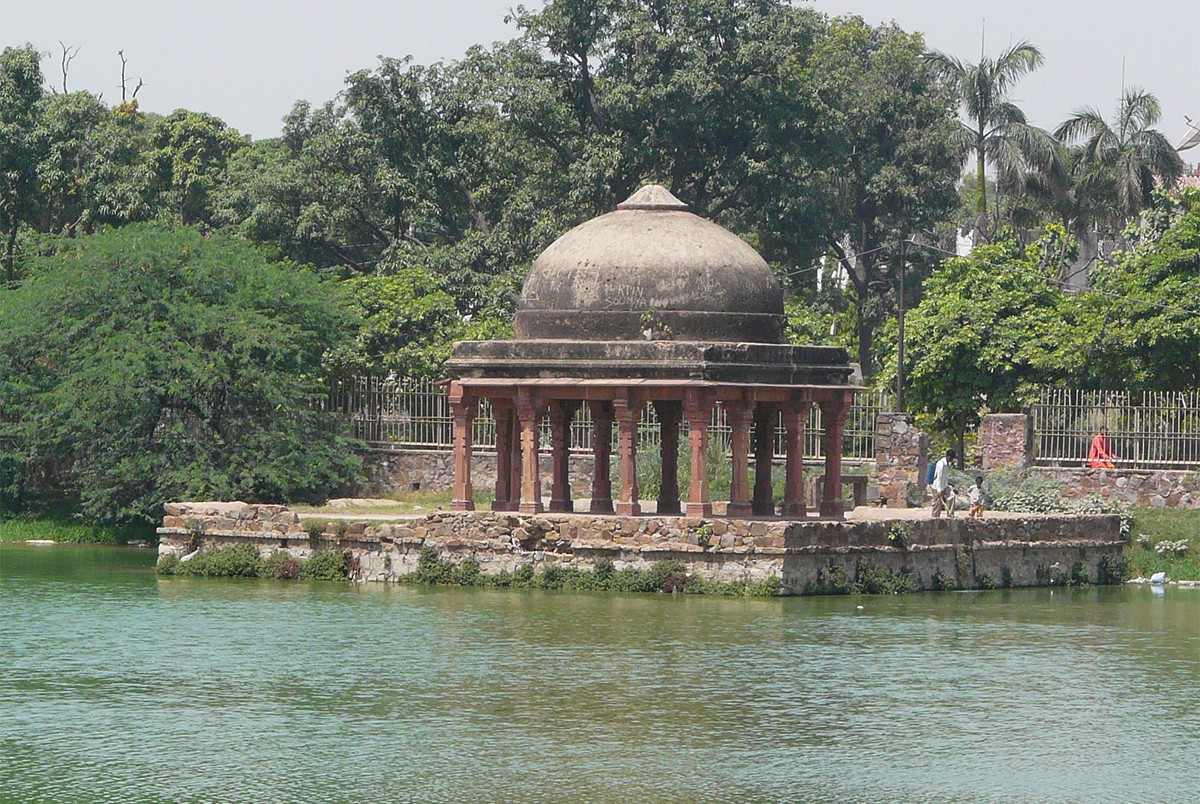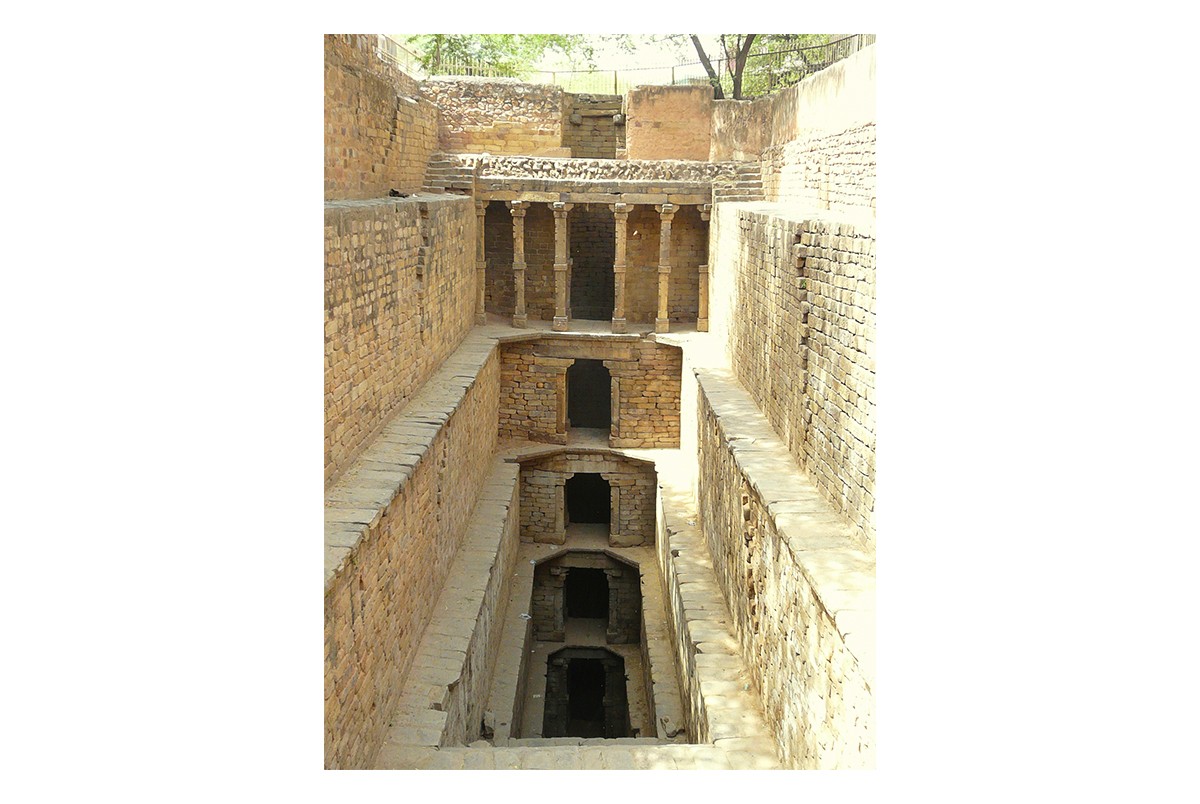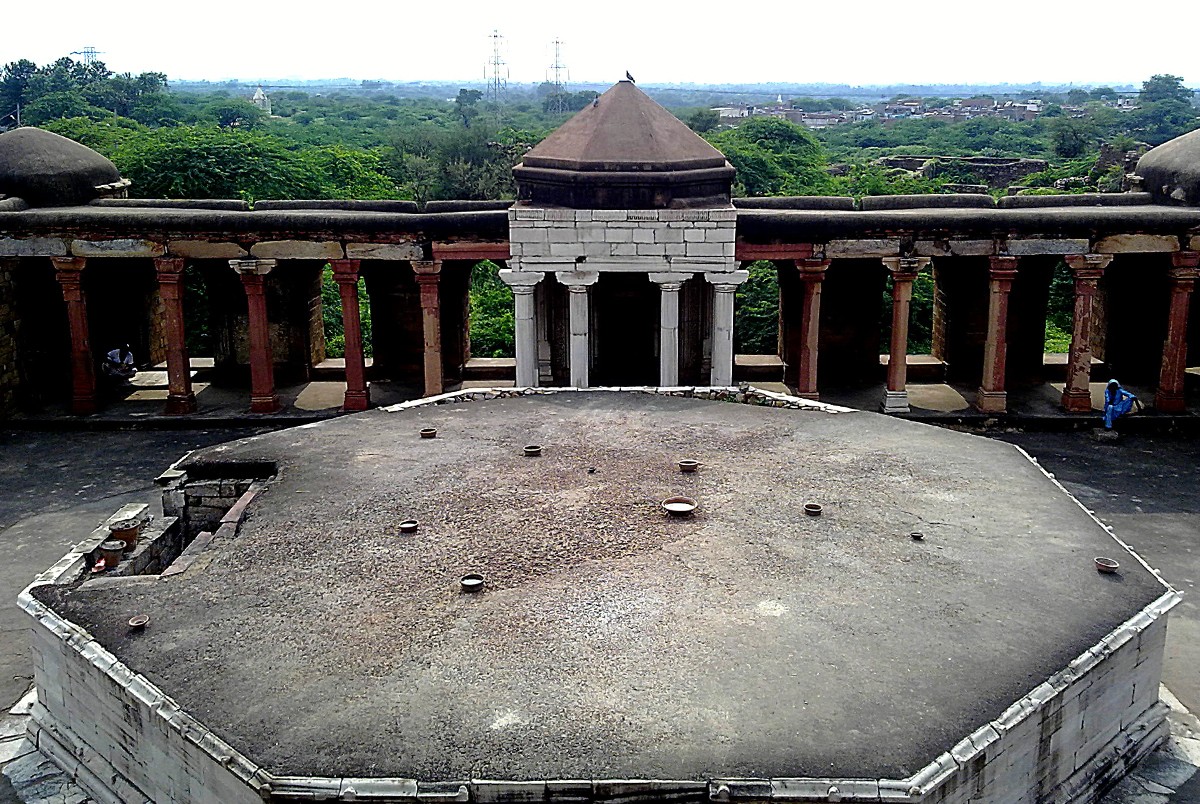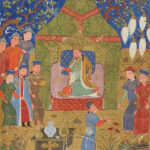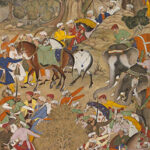Migrations From Central, West and Southeast Asia
1200–1250
Preceding and later driven by or parallel to Mongol expansion, major migrations of ethnic groups from Central Asia, Persia (present-day Iran) and Southeast Asia take place into South Asia, leading to the formation of the Delhi Sultanate in 1206 and the Ahom Kingdom in 1228.
The Sultanate commissions the earliest examples of Indo-Islamic architecture, which evolves into one of South Asia’s most influential architectural modes. It also fosters an active cultural exchange between the Indian subcontinent and Eurasia, through corridors opened up by the expanding Mongol empire. Driven by Mongol pressure, the Sultanate consolidates control over the resources of the Gangetic Plains and begins to raid southern India. On the eastern side of the subcontinent, the Ahom kings attract migrant communities from Southeast Asia and southern China; and introduce and patronise much of the art and literature unique to present-day Northeast India, notably various silk textile crafts.
Bibliography
Saikia, Yasmin. Assam and India: Fragmented Memories, Cultural Identity, and the Tai-Ahom Struggle. New Delhi: Permanent Black, 2005.
Wink, André. Al-Hind, the Making of the Indo-Islamic World, Volume II: Slave Kings and the Islamic Conquest, 11th-13th Centuries. Leiden: Brill, 1997.
Feedback 
This entry appears in
Art in South Asia
Visit Timeline
Associated Timeline Events
First Published: March 11, 2024
Last Updated: August 5, 2024



